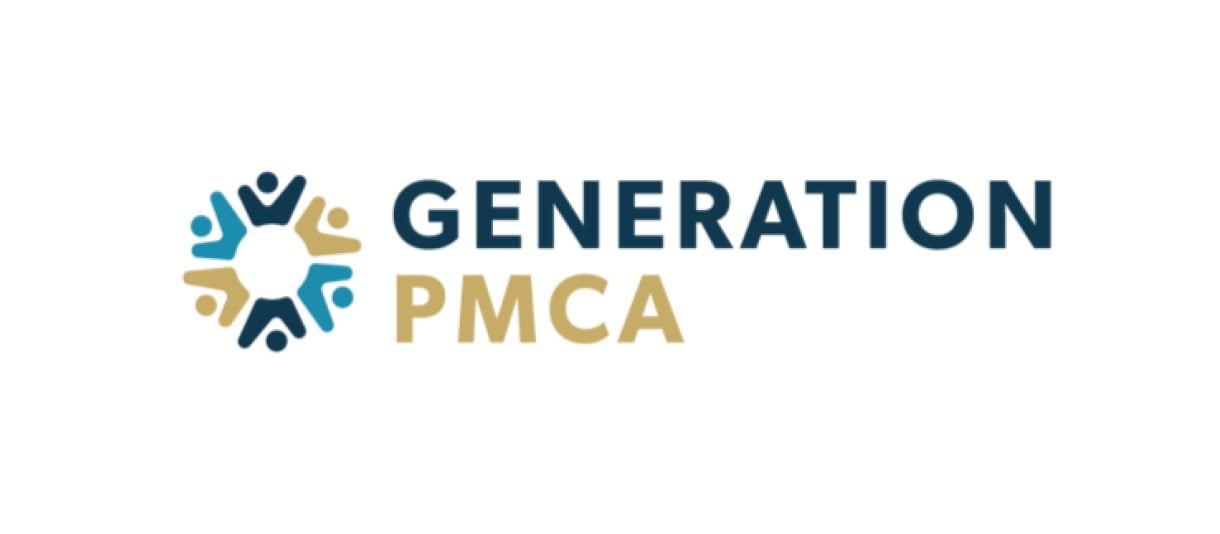Generation PMCA commentary for the first quarter ended March 2021, titled, “Zooming To Booming.”
Q1 2021 hedge fund letters, conferences and more
The pandemic forced us all to communicate via Zoom. While nobody wanted to attend a Christmas dinner or Passover seder on video, it was better than nothing. Thankfully, even though video communication is here to stay, vaccines are allowing us to return to normal. Meanwhile, the economy, now booming thanks to massive government stimulus and zero interest rates, should accelerate further in the near term as pent-up demand is unleashed.
Pedal to the Metal
Trillions of stimulus dollars have flooded into economies around the world. And it has stimulated beyond expectations. The global economy is flying. Economic stats in the U.S. are exhibiting record growth rates. Manufacturing and service sector expansion is surging. Commodity prices are soaring—industrial commodity prices have barely had down days since last July. Retail sales have spiked higher. Used car prices too. House inventories are at less than 2 months—a record low—and prices are up at a record year-over-year pace. Consumer confidence is at highs, despite the pandemic. There’s been record demand for mattresses and condoms—va va voom. And once everyone starts returning to the office, going to events, and vacationing, the economy should further strengthen.
The economic revival has returned corporate profit expectations to all-time highs too. Earnings per share results this quarter have exceeded expectations by a record level and forward guidance has been strong. Markets have taken note and stocks are at all-time highs. All this positive news caused speculation reminiscent of the dot-com bubble, though the frenzy isn’t as pronounced. The speculation now appears to be abating, with overdone stocks way off their highs. Even Zoom has declined about 50% from its high, though it’s still up 90% from its 52-week low.
Sentiment remains at the 100th percentile—most are bullish, which is bearish. Though sentiment has been unusually elevated since last November, an extremely long streak of such heightened investor optimism, one should not be complacent. Frenzies aren’t your friend. They always end with a separation of you and your money.
Despite a steep correction in high-flying stocks, overall market valuations in the U.S. are also at the 100th percentile of historical valuation levels. Therefore, the indexes are ahead of themselves and a sizable correction could occur at any time. Importantly though, underlying intrinsic value should continue to rise along with economic growth, especially while central banks’ policies remain highly supportive. Valuations should ultimately catch up.
Our preference now is to be fully invested in undervalued positions in our Growth accounts while being partially hedged by shorting U.S. stock market ETFs (or holding inverse ETFs in registered or long-only accounts). We normally reserve shorting for recessions or the rare occasions when prices fall below our TRIMTM line; however, with valuations and sentiment so elevated, we are comfortable maintaining hedges.
Long-Term Pain for Short-Term Gain
In the interest of boosting our returns, we just found an unbelievable stock. The company makes electric vehicles. Its lineup of cars is priced each day in 4,000 different cryptocurrencies. It has a fintech leasing arm that uses a massive cloud-based database to source customers. Each vehicle has solar embedded in the roof. The built-in dash infotainment system has a single button for placing a bet on your favourite sports team and another for locating the nearest cannabis retailer. A premium feature includes a small area for heating plant-based food. We were particularly attracted by the company’s celebrity board members. We haven’t bought shares yet because we are waiting for momentum to build and prices to return to a 52-week high. Despite its sky-high valuations and net losses, we are enamoured because the prospects looking out several years could be astounding. The ticker symbol is VROOM. Belated April Fools. Clearly this is the antithesis of our process.
We realize that investing is much like exercise and dieting, requiring discipline and often short-term pain for long-term gain. Why is it then that individuals feel compelled to pursue quick-rich schemes when they invariably end badly? A combination of lack of discipline, succumbing to emotion, overconfidence, and unawareness of risks are the likely culprits. And it’s not just individuals. Government’s can be just as irresponsible—look at the misguided stimulus designed to spur spending rather than investment, enhancing short-term growth at the expense of long-run sustainability.
Sure, high speeds can get often get you there faster, but they also increase the danger factor. Embracing momentum, popular securities, and leverage are a means to enhancing short-term performance but each can materially elevate risk. And we have recently witnessed many examples—nutty things—social networks touting stocks, record levels of individuals buying penny stocks, blowups of hedge funds (Melvin, Greensill, Archegos) each with surreal stories, a staggering cryptocurrency run-up even though it was started as a joke, unbelievable prices for NFTs (digital collectibles), and a substantial return for equity holders of a bankrupt company, just to name a few.
The number of profitless companies in the S&P 1500 recently rose to a high last seen in the dot-com bubble. Newsletter writer, Berna Barshay, coined the term ‘profitless prosperity.’ The share prices of these companies have unusually benefited despite their lack of bottom line. And there’s still close to a near-record-high number of companies whose market caps exceed $10 billion trading above 10x sales. While these larger companies are holding in, unprofitable tech and Bitcoin stocks are down over 50% from their '21 highs. The deflation of the bubble in speculative stocks seems to be already underway. Once the last buyer has placed an order and new issues abound, demand dries up while supply overwhelms. Then gloom sets in—a throwing in the towel effect—which drives former darlings even lower.
Value vs. Growth
In the last few months, there’s been a rotation from growth to value. Our kind of market. This rotation has kept the markets at highs in spite of the selloff in speculative stocks. Our favourite investment period was the 3 years that followed the dot-com peak. Our shorts fell (though our cuticles were in rough shape from the prior period as speculation persisted much longer than we thought possible), and our long positions rose, despite the indexes being dragged down as speculation waned. The upcoming period could be similar. Today's economy is still emerging from recession. Back then, the economic cycle was overdue for a downturn.
Over time, value has outperformed growth. But value relative to growth tends to go through long cycles of under- and out-performance. There were 7 fat years when value provided abundant returns versus growth from the bubble until '07. Then the market went off-script and 14 lean years followed. The cycle has recently turned in favour of value, and we’re hoping it’s off-script again, allowing for more than 7 years of outperformance.
Lowering the Boom?
We have always taken issue with prognosticators concerned about markets at all-time highs. In theory, as the value of businesses grows, new Fair Market Value (FMV) highs should occur each day implying corresponding new market highs. Recessions are clearly disruptive as earnings and valuations decline. During booms, it is market psychology that brings an ebb and flow as markets rise and fall away from ascending FMV. The difference today is that market prices are ahead of valuations. While valuations will catch up, it could take some time. In the meantime, an outsized correction could ensue. There are plenty of examples of substantial market corrections during upcycles, even when the markets have yet to attain FMV.
There are notable concerns which could cause the markets to ebb—especially since stocks in general are priced for perfection.
Interest rates are likely headed higher, at least in the near term. Inflationary concerns have caused longer-term rates to be bid up. Soon, central banks should react to the brisk growth rates and begin reining in accommodative policies and lift short-term administered rates to stave off overheating. Most don’t expect the Fed to begin tapering and raising rates until next year or the following year. Any earlier moves will come as a surprise. Though rates would need to rise quite a bit before they constrain recovery, richly valued stocks do not react well to rising rates.
Because leverage abounds, higher interest rates won’t bode well. The growth rate of debt to purchase stocks is at a record high. Another sign of market froth. And supply of stocks could overwhelm temporarily if and when margin calls arrive. At the same time, U.S. corporate insiders, the ones who know their businesses and valuations best, are selling at a much higher than usual rate.
Government debt is unconscionably high too with all major developed countries at record-high debt/GDP. The debt loads should act to moderate growth over time. It could also be problematic if rates were to spike as it would propel interest burdens. Balancing budgets will not be an easy task. Where’s prudence? According to Herb, she hasn’t been seen since his grade-school days. Bada boom. And the U.S. Federal government is preparing for tax hikes. That will certainly impact corporate profits if enacted.
Some companies will struggle with higher costs from wages, raw materials (lumber prices ran up over 50% just this year), and interest rates if they rise too far. And parts shortages, such as with semiconductors, won't help either. Small businesses are facing record level unfilled positions. Unbelievable, given the lockdowns we endured, and unfathomable to us Torontonians still stuck in lockdown, and leading the world now in duration.
Inflation expectations in the U.S. are higher than they’ve been in years—about double the 1.6% PCE rate. With the velocity of money finally rising, it could have inflationary implications, but will it be cyclical or secular (economist speak for short term versus long term)? While inflation should continue to lift cyclically, the secular trend is still disinflationary, in our view from massive debt levels, worsening demographics, and ongoing productivity enhancements. Births in the U.S. were the lowest in 41 years in '20 and have been on the decline for years. Immigration, which can act as an offset, fell too. All of these factors ought to weigh on economic growth and inhibit longer-term inflation. Shorter-term supply chain bottlenecks will loosen. Even toilet paper hoarding has abated causing a poor quarter for Kimberly-Clark. Productivity enhancements won’t subside as the technological revolution seems to be at full tilt. This too is disinflationary.
We are also concerned in the near term because the economic growth rate should soon level off, which normally occurs 12 months after the bottom of recession. And the virus could worsen as a result of variants (particularly if vaccines aren’t effective for certain variants) or simply because a disturbingly large number of people are still refusing to get vaccinated.
Our Strategy
As noted, we normally would choose to hedge when our economic composite is warning of recession and we are fearful of an accompanying bear market. Although this is not currently the case, with valuations and sentiment so high, to dampen the pain of a potential major correction we prefer to hedge our undervalued long positions with short exposure to the overvalued U.S. stock market. At the same time, we are confident that, even if an outsized correction unduly impacts the prices of our long positions, the buoyant economy will continue to boost the underlying FMVs of our holdings while we wait.
Our Portfolios
The following descriptions of the holdings in our managed accounts are intended only to explain the reasons that we have made, and continue to hold, these investments in the accounts we manage for you and are not intended as advice or recommendations with respect to purchasing, selling or holding the securities described. Below, we discuss each of our new holdings and updates on key holdings if there have been material developments.
All Cap Portfolios - Recent Developments for Key Holdings
Our All Cap portfolios combine selections from our large cap strategy (Global Insight) with our best small and medium cap ideas. We generally prefer large cap companies for their superior liquidity and lower volatility. Importantly, they tend to recover back to their fair values much faster than smaller stocks, so they can be traded more frequently for enhanced returns. The smaller cap positions are less liquid holdings which are potentially more volatile; however, we hold these positions because they are cheaper, trading far below our FMV estimates making their risk/reward profiles favourable.
On the smaller cap holding front, Dynacor Gold Mines announced that its recent efforts to expand its plant were on schedule to be completed in June. It’s expected to lift production capacity by over 40% and pushes our FMV estimate up over $4.
All Cap Portfolios - Changes
In the last few months, we made several changes within our large cap positions all summarized in the Global Insight section below.
CoreCivic was a recent smaller cap addition. The company operates correction and detention facilities, transportation services, reentry centres, and electronic monitoring. The company, a former REIT, owns most of its facilities which it operates or leases to governments, predominantly in the U.S. Its stock was hurt by the Biden administration’s initiative to eliminate private federal prisons. While this should not occur quickly, there have been concerns regarding the company’s ability to refinance its debt. We began investing just after a recent private debt issue that was oversubscribed, allaying our concerns. The company is focused on using its substantial free cash flow to repay debt while cutting costs and adjusting its capex plans. Most of its federal government work is with Immigration and Customs Enforcement and the US Marshals Service, neither of which own or operate facilities. The company already leases a number of facilities to state governments and negotiations for state leases have been based on fair market values or replacement costs. Headline risks will likely continue for some time and the government could irrationally decide to build its own high-cost facilities. However, we believe value should surface as governments begin to lease CoreCivic’s facilities. Meanwhile, the company trades well below our estimated $19 FMV.
Global Insight (Large Cap) Portfolios - Recent Developments for Key Holdings
Global Insight represents our large cap model (typically with market caps over $5 billion at the time of purchase but may include those in the $2-5 billion range) where portfolios are managed Long/Short or Long only. A complete description of the Global Insight Model is available on our website. Our target for our large cap positions is more than a 20% return per year over a 2-year period, though some may rise toward our FMV estimates sooner should the market react to more quickly reduce their undervaluations. Or, some may be eliminated if they decline and breach TRAC™ floors. At an average of about 70 cents-on-the-dollar versus our FMV estimates, our Global Insight holdings appear cheaper, in aggregate, than the overall market.
There were no recent material developments for our key holdings.
Global Insight (Large Cap) Portfolios - Changes
In the last few months, we made several changes within our large cap positions. We bought Unilever N.V. (NYSE:UL), Amazon.com, Inc. NASDAQ: AMZN, Sun Art Retail GP ADR OTCMKTS: SURRY, Lockheed Martin, TAL Education, and Jumia Technologies. We sold Rakuten Group, Baidu, Sony Group, Intel, and Allstate as they were close to our FMV estimates or inflected down from TRAC™ ceilings.
Unilever manufactures and distributes many leading consumer brands including Dove, Lever 2000, Q-Tips, Vaseline, Ben & Jerry’s, and Popsicle. Over 2.5 billion people in 191 countries use its products. Shares have flatlined since '17 as top line growth eluded the company. In response, the company has made a series of strategic decisions to reignite growth, including reshaping its portfolio towards high growth categories such as hygiene and functional nutrition. Slower growth brands such as Lipton are being divested. By the end of '21, Food & Refreshments will represent just over one-third of the company’s product lineup, down from just under half 5 years ago. Geographically, Unilever is focusing on the U.S., India and China as these countries are expected to represent 60% of global growth through 2030. While the portfolio transition could take longer than anticipated and acquisitions of new brands pose risks, we believe the company’s growth initiatives, coupled with intense investments in e-commerce, should result in annual sales growth of 3-5%. Our FMV estimate is $72.
Amazon.com is the Western world’s largest e-commerce platform with adjacent retail, digital entertainment, cloud, and advertising businesses in a growing ecosystem of innovations. Amazon’s scale, network effects, and learning culture are enabling the company to take market share in massive industries. E-commerce sales dramatically accelerated amidst the pandemic as purchasing patterns shifted towards online channels, supported by strong Prime membership growth and greater demand for digital entertainment. The company is also increasingly monetizing its lucrative ad space and sticky relationships with customers to scale its high margin digital-ad segment. AWS, the web services subsidiary, continues to exhibit robust growth rates as enterprises keep shifting workloads to the cloud. And Amazon’s leading positions in IoT and AI as a service should assist maintaining growth in the coming years as adoption rates increase. The mix shift in revenue towards higher margin third-party marketplace, ads, and cloud businesses continues to enhance profit margin. Competition on many fronts and regulatory issues, including governments’ concern with the company’s dominance, are the primary risks. The share price drifted down with the selloff in growth since our sale of shares last summer, even though our FMV estimate continued to advance to $4,715, without any value from its various earlier-stage initiatives.
Sun Art Retail, which is backed by Alibaba Group, is the largest grocery retailer in China with an integrated online-to-offline business model operating in an increasingly digital market. Sun Art is now coming out of a multi-year business model transition, having mostly shifted from a pureplay brick-and-mortar operator to a digitally integrated store network with the second largest online grocery business. Store openings are ramping up as the company expands its updated formats to new geographies. Moreover, with online penetration of the grocery market at just under 10%, the runway for scaling is substantial, as Sun Art is poised to generate over 50% of sales online over the next 5 years or so. Topline growth is set to accelerate on the back of its short-run margin-compressing investments, even as competition has heated up in the market. Management has more pressure to execute well on the new strategy and our estimate of FMV is HK$10.
Lockheed Martin is one of the largest aerospace and defense companies in the world. With U.S. government contracts representing over 70% of revenue, we believe the market is worried about a reduction in military spending by the Biden administration. However, as evidenced by the '22 budget which requests $715 billion for the Pentagon, numerous global geopolitical hot spots, in addition to fierce competition with China, annual defense spending should remain steady. As well, with over 100,000 employees, plus thousands of others tied to its military ecosystem, Lockheed is a vital employer with which the government is unlikely to tinker. Strong demand for the company’s Sikorsky helicopters and guided missiles should propel cash flow from operations to over $9 billion by '23. Our FMV estimate is $400.
TAL Education is China’s largest after-school K-12 tutoring service provider and second largest edtech platform. Its teacher- and student-centric model has enabled the company to develop a premium brand and a word-of-mouth advertising advantage in a highly fragmented industry. Offline growth has decelerated as regulators have introduced stricter policies to weed out bad operators and establish healthy standards in a market rife with unlicensed businesses and extreme student pressure. While teaching hours and fee restrictions have impacted sales growth in the short-run, a better regulatory environment should ultimately benefit the best-in-class providers who offer a safer high-quality learning experience. Despite these headwinds, student adoption growth remains robust. Enrollments accelerated year-over-year as demand has remained high. TAL’s higher-margin online segment accelerated too, because the pandemic heightened the need for greater affordability and flexibility. Our FMV estimate is $80 even with more edtech competition and evolving regulations as TAL appears to have the leadership and the business model to weather these risks.
Jumia Technologies is the largest pan-African digital ecosystem of e-commerce, fintech, online-to-offline, and logistics services—the Amazon of Africa. African Internet and e-commerce penetration are 40% and less than 5% respectively, because the continent is still in the early stages of digitalizing. Driven by favourable demographic, political, economic, and investment trends, the standard of living of Africans is improving, and access to affordable Internet through smartphones is rapidly increasing. Jumia’s early and strong investments in logistics, consumer education, and mindshare has reduced transaction friction and positioned the company as the trusted platform for buying goods and services and doing business. Its scale and network effects have provided Jumia with a multi-decade runway to grow buyers, sales, and profits while extending deeper into fintech and advertising solutions like its more mature peers in other jurisdictions around the world. Jumia’s geographic diversity mitigates country-specific risks, and the strong management team should enable it to navigate execution, operational, and competitive challenges. The company has been losing money as it continues to prize market share while scaling its business. We believe the stock is materially undervalued though, given our FMV estimate above $100.
Income Holdings
At 4.3%, high-yield corporate bond yields remain near all-time lows. Our income holdings have an average current annual yield (income we receive as a percent of current market value of income securities held) of about 6%. Most of our income holdings—bonds, preferred shares, REITs, and income funds—trade below our FMV estimates. While we expect the gap to close, a correction in the overall markets could put temporary pressure on our holdings. We sold Northwest Healthcare REIT and Quad Graphics bonds as both achieved our estimates of FMV. Though finding attractively valued higher-yielding investments is difficult with overall rates so low, we did make 3 recent purchases.
We bought Store Capital REIT, a retail-based net lease REIT yielding 4.5% whose peer-leading ROEs, long leases, and full occupancy justify our $48 FMV estimate. GEO Group 6.0% 4/15/26 bonds were attractive, selling well below par with a 16% yield-to-maturity that we believe is way too high given its defensive business model and investment-grade government clients, despite the U.S. federal government’s initiatives to eliminate private prisons which we believe has created a significant misperception issue for the company. And we bought Vistra, a highly profitable U.S. utility operating in 20 states that was unduly impacted by losses incurred from the Texas winter storms—a one-time event that knocked the share price down to a 40% discount to our estimated FMV of $27. It yields 3.6% while we await a share price recovery.
Booming Beats Zooming
While Zooming is now a way of life, as economies reopen around the world the face-to-face interactions that we all crave will once again become the norm. Whether at work or play, we’re all missing in-person activities, camaraderie, collaboration, and even small talk.
Thanks to government intervention and the miracle of vaccines, the economy is now booming. The boom should not sustain itself at the current growth rates. However, we believe the upcycle should last for years to come. With valuations full and expectations uniformly high, we are concerned that even a slight negative shock could temporarily deflate the markets.
But we’re unusually relaxed because we’re able to build portfolios of high-quality undervalued securities while hedging an overvalued market, realizing that a robust economy should raise our holdings’ FMVs as we wait for the security prices to better reflect underlying values.
Even as the high market valuations continue to Loom, we’re looking forward to less Zoom, no Doom, and a continued Boom. Rah, rah, sis boom bah!
Randall Abramson, CFA
Herb Abramson
Generation PMCA Corp.






